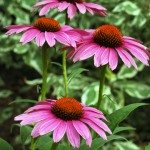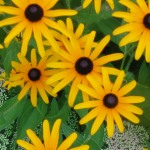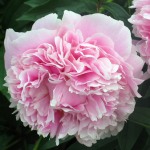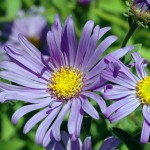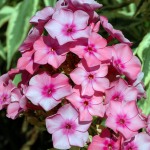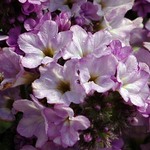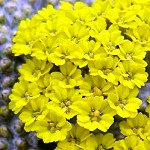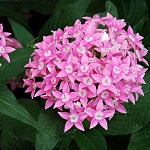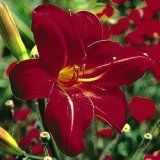10 Favorite Sun Perennials
Sun perennials are a must for bordering your perennial flower gardens. The vibrant colors give you an eyeful no matter what the season. Our gardening editors have put together a list of the top 10 sun perennials that have gone on to become their favorites. There were so many to choose from, but here is what we have zeroed in on.
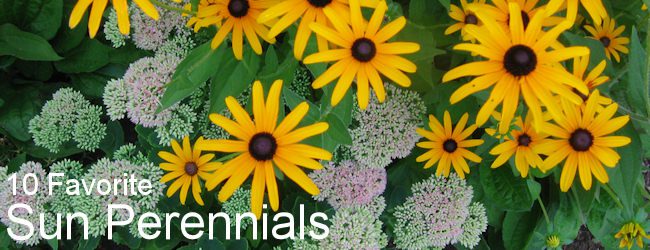
With hardly any maintenance and bountiful blooms, these sun perennials are sure to please everyone.
These little florets arranged in a prominent, somewhat cone-shaped head are hardy sun-resistant perennials and a great choice to start off a list of favorite sun perennials. They are herbaceous, drought-tolerant perennial plants growing to 1 or 2 m in height. They tolerate a wide variety of conditions, maintain attractive foliage throughout the season, and multiply rapidly.
Echinacea, notably P. purpurea (shown in picture), E. angustifolia, and E. pallida, are grown as ornamental plants in gardens.
Black-eyed Susan, Blackiehead, Brown Betty, Brown Daisy, Brown-eyed Susan, Gloriosa Daisy, Golden Jerusalem, Poorland Daisy, Yellow Daisy or Yellow Ox-eye Daisy – whatever you choose to call it, this beautiful perennial which is the state Floral Emblem of Maryland will refresh your spirits every time you see the abundant blooms in your flower bed.
It flowers from June to August and can reach a height of 1-2 m.
Plant Info on Black-eyed Susans
These old-fashioned beauties are a personal favorite and remind me of Victorian style outdoor entertaining in green lawns with these full blooming beauties arranged in white wicker baskets.
These State flowers of Indiana are extensively grown as ornamental plants for their very large, often scented flowers.
Aster comes from the Greek word for “star”, and refers to the shape of the flower head. A great thing about these is that they can grow in all hardiness zones.
If you have a cut-flower garden, these are must haves. You can simply toss lots of them in any vase or containers making a free-style arrangement without the need for any other flower arranging talents.
Phlox (meaning ‘flame’ in Greek) is a genus of 67 species of annual or perennial flowering plants. Our favorite Summer Phlox (shown in the picture) is the most commonly offered offered Phlox in nurseries has white, pink or red blooms and grows 3-4 ft. in height.
If you like to have butterflies in your summer garden, then this plant should be a staple in your flower beds.
The Garden Heliotrope (Heliotropium arborescens) is a highly fragrant perennial plant, originally from Peru. It is especially notable for its intense, rather vanilla-like fragrance. A common name for it is cherry pie.
It grows in bunches and will delight you with its abundance. Another must-have for flower lovers.
Plant Info on Garden Heliotrope
Achillea millefolium or Yarrow (other common names Common Yarrow, Gordaldo, Nosebleed plant, Old Man’s Pepper, Sanguinary, Soldier’s Woundwort, Thousand-leaf, Thousand-seal) produces one to several stems (0.2 to 1m tall).
It commonly flowers from May through June, and is a frequent component in butterfly gardens.
This ornamental onion bulb is one of the most striking North American Alliums. It blooms from May to July with dense heads of pink flowers and grows upto 9 inches in height.
Bunches of brght Allium Unifolium nestled among dark green leaves will add color to your garden and are very easy to plant and maintain.
Plant Info on Flowering Onions
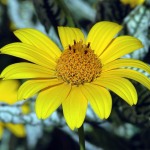
![]() Oxeye Sunflower – Heliopsis helianthoides
Oxeye Sunflower – Heliopsis helianthoides
From midsummer into fall, the Oxeye sunflower or Heliopsis helianthoides plants bear 2 in (5.1 cm) bright flowers scattered singly atop loosely branched tall bare stems.
Oxeye sunflower will grow in almost any moderately fertile soil and prefers full sun, but will tolerate partial shade.
One popular perennial is resilient, hardy and perfect for transplanting from the first glimmers of spring into the dog-days of summer, and all the way up to the first hard frost. That perennial is the daylily. No sun-perennials list can ever be complete without these popular favorites.
A long, informal border of lilies provides a soft barrier between yards, or offers some privacy from the street. A more formal bed containing three to five everblooming specimen plants can provide an island of bloom in the middle of a well-kept lawn.

